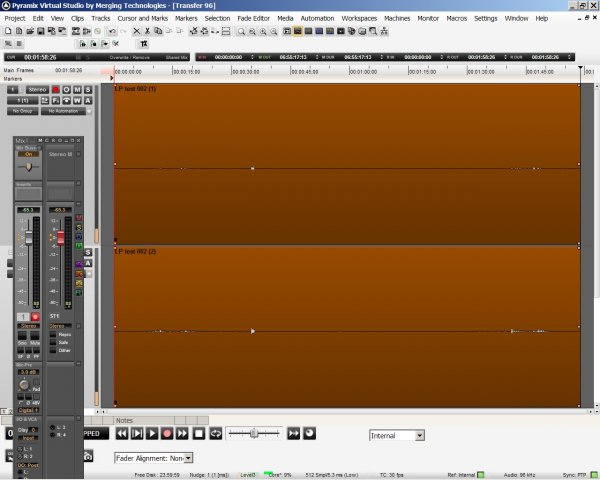In this case it is probably a combination of vibrations through the vinyl surface and vibrations in the cartridge body/headshell/arm. I can yell at my cart until I'm blue in the face and get zip. .
Well here you go. I placed the stylus on a record with out it spinning. I recorded the output of the phono and started talking (Gettysburg Address). The large spike is me saying nation about 1' from the stylus at about 85dB. Just to make sure my breath wasn't a factor, I spoke off axis. I'll say again... no turntable/arm/cart. is immune from noises in the air, especially if you play loud in the same room.
The first tracing is with the A/D converter at 6dB gain (where it normally is) and the second tracing is at 3dB gain. So if this is just my voice at roughly 400Hz, then just think what a good bass line would look like!!

Last edited:




